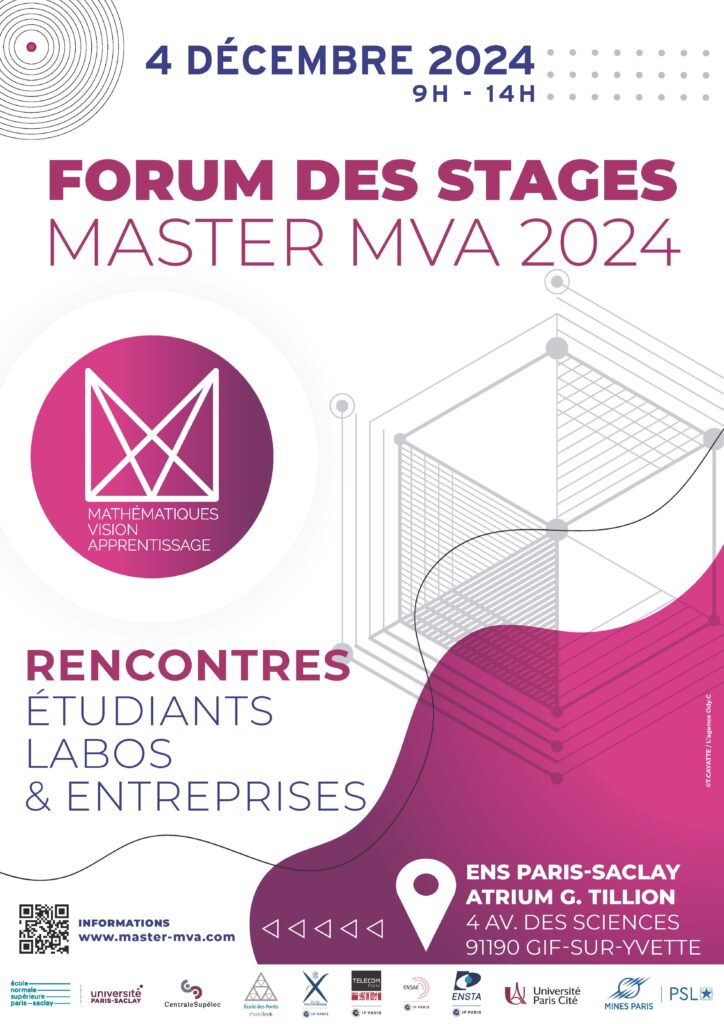Prè-requis
Basic linear algebra, analysis and probability
Objectif du cours
Automated object recognition – and more generally scene analysis – from photographs and videos is the great challenge of computer vision. The objective of this course is to provide a coherent introductory overview of the image, object and scene models, as well as the methods and algorithms, used today to address this challenge.
Presentation : here
Organisation des séances
- 10 lectures of 3 hours each.
- All materials and lectures will be in English. Reports from assignments and the final project can be done in French or English.
Mode de validation
There will be three programming assignments representing 50% of the grade and a research-oriented final project (including report and presentation) representing 50% of the grade.
Références
- D.A. Forsyth and J. Ponce, « Computer Vision: A Modern Approach », Prentice-Hall, 2nd edition, 2011
- J. Ponce, M. Hebert, C. Schmid, and A. Zisserman, « Toward Category-Level Object Recognition », Lecture Notes in Computer Science 4170, Springer-Verlag, 2007.
- R. Szeliski, « Computer Vision: Algorithms and Applications », Springer, 2010, Available online: http://szeliski.org/Book/.
Thèmes abordés
- Instance-level recognition: camera geometry, local-invariant features, correspondence, efficient visual search
- Category-level recognition: bags of features, sparse coding and dictionary learning
- Neural networks, optimization methods
- Convolutional neural networks for visual recognition
- Motion and human actions
- 3D object recognition
- Weakly-supervised learning for visual recognition
Les intervenants
Gül Varol
(ENPC)
Jean Ponce
(ENS Ulm)
Cordelia Schmid
(INRIA)
Ivan Laptev
(INRIA)
Josef Sivic
(INRIA)
Mathieu Aubry
(ENPC)
